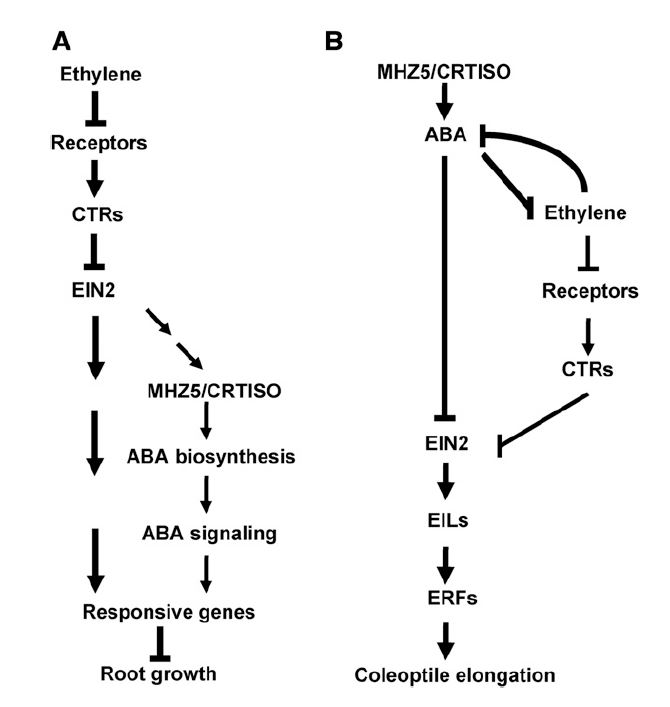Ethylene Responses in Rice Roots and Coleoptiles Are Differentially Regulated by a Carotenoid Isomerase-Mediated Abscisic Acid Pathway
发布人: 发布日期: 2015年04月16日 00:00 浏览次数:
Ethylene
Responses in Rice Roots and Coleoptiles Are Differentially Regulated by
a Carotenoid Isomerase-Mediated Abscisic Acid Pathway
Cui-Cui
Yin,Biao Ma,Derek Phillip Collinge,Barry James Pogson,Si-Jie He,Qing
Xiong,Kai-Xuan Duan,Hui Chen,Chao Yang,Xiang Lu,Yi-Qin Wang,Wan-Ke
Zhang,Cheng-Cai Chu,Xiao-Hong Sun,Shuang Fang,Jin-Fang Chu,Tie-Gang
Lu,Shou-Yi Chen,and Jin-Song Zhang
The Plant Cell
http://www.plantcell.org/content/early/2015/03/31/tpc.15.00080
Abstract
Ethylene
and abscisic acid (ABA) act synergistically or antagonistically to
regulate plant growth and development. ABA is derived from the
carotenoid biosynthesis pathway. Here, we analyzed the interplay among
ethylene, carotenoid biogenesis, and ABA in rice (Oryza sativa) using
the rice ethylene response mutant mhz5, which displays a reduced
ethylene response in roots but an enhanced ethylene response in
coleoptiles. We found that MHZ5 encodes a carotenoid isomerase and that
the mutation in mhz5 blocks carotenoid biosynthesis, reduces
ABAaccumulation, and promotes ethylene production in etiolated
seedlings. ABA can largely rescue the ethylene response of the mhz5
mutant. Ethylene induces MHZ5expression, the production of neoxanthin,
an ABA biosynthesis precursor, andABA accumulation in roots. MHZ5
overexpression results in enhanced ethylene sensitivity in roots and
reduced ethylene sensitivity in coleoptiles. Mutation or overexpression
of MHZ5 also alters the expression of ethylene-responsive genes. Genetic
studies revealed that the MHZ5-mediated ABA pathway acts downstream of
ethylene signaling to inhibit root growth. The MHZ5-mediated ABA pathway
likely acts upstream but negatively regulates ethylene signaling to
control coleoptile growth. Our study reveals novel interactions among
ethylene, carotenogenesis, and ABA and provides insight into
improvements in agronomic traits and adaptive growth through the
manipulation of these pathways in rice.

